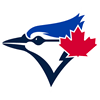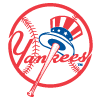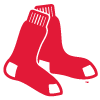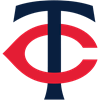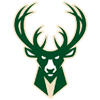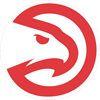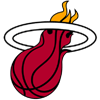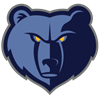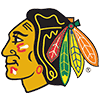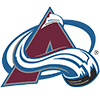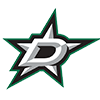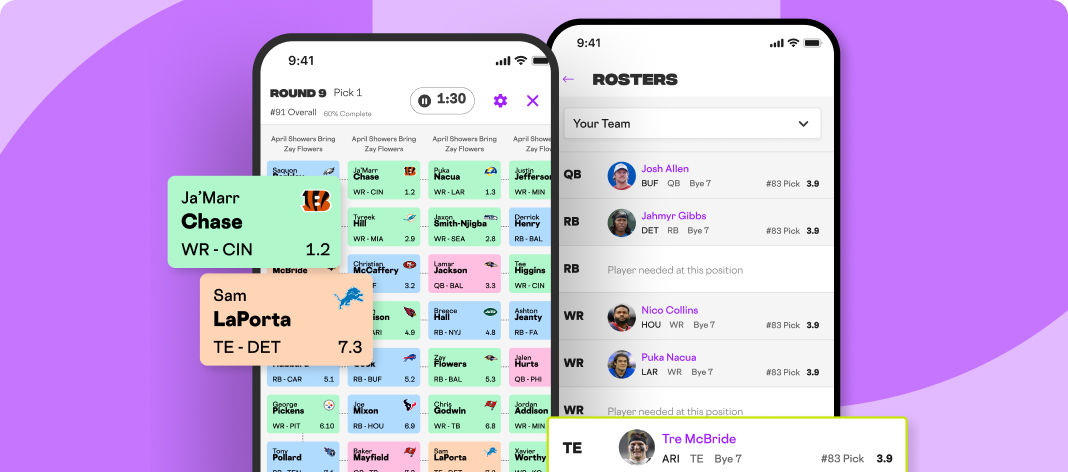It's time to take a look around the NHL to set the stage for the 2025-26 campaign. Once again, we'll take a look at each division, highlighting all the key moves while pointing out the position groups and players that could be significant to fantasy in the season ahead. First up is the Central Division.
Winnipeg Jets
The Jets were stellar in the regular season, winning the Presidents' Trophy with a 56-22-4 record, but they couldn't turn that into a deep playoff run, exiting in the second round. It's tough to be the best in consecutive campaigns, and they'll have to attempt it with one of their top scorers gone in free agency.
Nikolaj Ehlers (Hurricanes) is the biggest name that walked out the door, while Mason Appleton (Red Wings) and Brandon Tanev (Mammoth) also departed the Jets. In their place, the team signed Jonathan Toews, Gustav Nyquist, Tanner Pearson and Cole Koepke to fill out the forward depth. The Jets will also be without Adam Lowry (hip) for at least part of the start of the season. The theme here is that players around their prime are gone, and mostly more experienced players came in to take their place. That creates risk, especially with Toews, who has been out of hockey for two full years, and Nyquist, who showed signs of decline in the last few seasons.
At forward, the Jets are a team that gets by without a top-tier superstar. Despite that, they tied for third
It's time to take a look around the NHL to set the stage for the 2025-26 campaign. Once again, we'll take a look at each division, highlighting all the key moves while pointing out the position groups and players that could be significant to fantasy in the season ahead. First up is the Central Division.
Winnipeg Jets
The Jets were stellar in the regular season, winning the Presidents' Trophy with a 56-22-4 record, but they couldn't turn that into a deep playoff run, exiting in the second round. It's tough to be the best in consecutive campaigns, and they'll have to attempt it with one of their top scorers gone in free agency.
Nikolaj Ehlers (Hurricanes) is the biggest name that walked out the door, while Mason Appleton (Red Wings) and Brandon Tanev (Mammoth) also departed the Jets. In their place, the team signed Jonathan Toews, Gustav Nyquist, Tanner Pearson and Cole Koepke to fill out the forward depth. The Jets will also be without Adam Lowry (hip) for at least part of the start of the season. The theme here is that players around their prime are gone, and mostly more experienced players came in to take their place. That creates risk, especially with Toews, who has been out of hockey for two full years, and Nyquist, who showed signs of decline in the last few seasons.
At forward, the Jets are a team that gets by without a top-tier superstar. Despite that, they tied for third in the league with 3.35 goals per game while shooting 11.9 percent collectively in 2024-25. Kyle Connor and Mark Scheifele are the sure-fire first-liners, and they worked well with Gabriel Vilardi last season. Vladislav Namestnikov is the team's Swiss Army knife, slotting in at center or on the wing -- he'll likely be in the middle until Lowry is healthy, especially if Toews struggles. Cole Perfetti and Nino Niederreiter add some depth-scoring upside, and Alex Iafallo could carve out a role as a bottom-six option with power-play chances as he did last year. There's also a chance for prospects like Brayden Yager or Brad Lambert to get some looks if injuries pile up, though the team has plenty of organizational depth options to fill out the bottom six, led by Pearson, Koepke, Morgan Barron and David Gustafsson, which should lead to a competitive camp.
Winnipeg's strength last year came from their play in their own zone. Connor Hellebuyck collected his third Vezina Trophy as the league's top netminder and also walked away with the Hart Trophy as the league MVP. He led all goalies with 47 wins, eight shutouts and a 2.00 GAA. Making Hellebuyck's job easier is a steady and deep defense that remains virtually unchanged from the end of 2024-25. Josh Morrissey and Neal Pionk enter the season as the top blueliners, complemented by shutdown defenders Dylan DeMelo and Dylan Samberg. The third pairing will create competition between Logan Stanley, Haydn Fleury and Luke Schenn. This is a unit that can hit and block shots in high quantities, and Hellebuyck's elite goaltending will take care of most mistakes that slip through. Eric Comrie had a career year as backup last season, though he won't get much playing time.
Depth will be critical for the Jets' success in the Central. There's no room to rest on their laurels, especially with plenty of other teams right behind them. Fantasy managers who miss out on high-end line stacks could benefit from poking around this roster, which has a strong and skilled middle six.
Dallas Stars
Stalling out in the Western Conference Finals for the third year in a row cost Pete DeBoer the head coach position. Glen Gulutzan will take over and try to take a talented roster to the Stanley Cup Finals after gaining some experience in head coach and assistant coach positions over the last decade-plus since his last stint in Dallas. The salary cap will be a problem, leaving the Stars no room for significant injuries, which could be a concern for the older players on the roster.
That tight cap led to the departures of Mason Marchment, who was traded to the Kraken, as well as Mikael Granlund and Evgenii Dadonov, who signed with the Ducks and Devils, respectively. Defenseman Cody Ceci also walked in free agency, joining the Kings, though the Stars were able to re-sign Colin Blackwell. Also added to the fourth line are Radek Faksa, who returns after a one-year stay with the Blues, and Nathan Bastian, who left the Devils. The Stars also dumped salary in a trade, sending Matt Dumba to Pittsburgh for a younger but unproven blueliner in Vladislav Kolyachonok.
The lack of moves in the offseason isn't a bad thing -- the Stars have been right in the mix as Cup contenders for years now. General manager Jim Nill made a big swing last spring to acquire Mikko Rantanen from the Hurricanes, and he's now the centerpiece of the offense, though it cost promising young forward Logan Stankoven. Rantanen, along with Roope Hintz and Jason Robertson, make up one of the best top lines in the league. Matt Duchene, Tyler Seguin and Jamie Benn are set for middle-six roles and power-play time, while Wyatt Johnston looks to continue growing his offense while avoiding injuries as he has for his first three years in the league. Sam Steel may begin the year as the fourth-line center, but he can move up when Johnston gets chances on the wing, and Mavrik Bourque should get a chance to grow after a 25-point rookie year. Oskar Back, Faksa, Blackwell and Bastian bring some defensive stability in the bottom six. Robertson's name has dangled in trade rumors to create some cap space, and any players that come over in a swap will likely help a team that has little encouraging prospect depth up front.
On the back end, Jake Oettinger continues to be a top-tier goalie, though he'll be working with a just-decent defense. The defense gave up 29.0 shots per game in 2024-25, and not much has changed with that unit. Miro Heiskanen is an elite blueliner, especially in his own zone, and Thomas Harley is also well on his way to that status. However, Ilya Lyubushkin may struggle, while Nils Lundkvist and Kolyachonok are tough to trust, though they may be good enough for the third pairing. Esa Lindell is a stable stay-at-home defender, and Lian Bichsel is a young player who can add some thump at the back end, though he doesn't have much offensive upside. Alex Petrovic could spend more time in the NHL this year if the young blueliners don't solidify their spots. Casey DeSmith is the backup goalie and should be steady while seeing a decent share of time, as the Stars have made it a priority to try to keep Oettinger under 60 games.
There's too much talent on this roster for the Stars to struggle, but there are warning signs. Two or three injuries at the same time will test the depth, especially on the blue line. Adapting to a new coaching system could also lead to some growing pains, though the Stars often had fluid forward groups in recent years, with that adaptability likely to help the coaching adjustment go easier for everyone involved.
Colorado Avalanche
A first-round playoff exit is nothing to be proud of for a team that is still in its championship window. However, last year's numerous injuries, lack of depth and significant roster turnover likely led to some problems. The Avalanche remodeled their center depth and goaltending room over the last 12 months, and they're positioned to stay near the top of the heap in 2025-26.
While many of the moves came from last season, the turnover continued into the offseason. Charlie Coyle and Miles Wood were shipped to Columbus to clear cap space for re-signing Brock Nelson. Jonathan Drouin signed with the Islanders and Jimmy Vesey left for Switzerland, while Joel Kiviranta re-signed after testing free agency. The Avalanche also signed Victor Olofsson, who could be a power-play specialist in the middle six who has upside if he gets moved up when injuries occur. Ryan Lindgren went to the Kraken and Erik Johnson is still unsigned, but the Avalanche replaced them with Brent Burns on the blue line. Alex Barre-Boulet and Danil Gushchin were also acquired in the offseason to create some forward depth in addition to a group of returning minor-leaguers including Tye Felhaber, Ivan Ivan and T.J. Tynan. Colorado will look to use fewer than the 49 players they needed in 2024-25.
The biggest names to keep an eye on are Gabriel Landeskog and Martin Necas. In Landeskog's case, it took until the playoffs for him to return from a three-year absence due to multiple knee surgeries. The early playoff exit will afford him plenty of time to prepare for the grind of a full campaign, as well as a potential Olympic run with Sweden. Necas, meanwhile, is entering a contract year. He earned a career-high 83 points in 79 regular-season games between Colorado and Carolina, and he looked steady alongside superstar forward Nathan MacKinnon. Rounding out the top six are Artturi Lehkonen, Nelson and Valeri Nichushkin. The team doesn't have great depth, and Logan O'Connor (hip) is working back from an injury suffered late last season. Parker Kelly, Ross Colton and Kiviranta can bring some hits, and Jack Drury projects as the third-line center. The fourth line is up for grabs and will likely be a mix of players shuffling down when the team is healthy and minor-leaguers impressing enough to get a look in the NHL.
Defensively, the top-pair duo of Cale Makar and Devon Toews is one of the best in the league. Toews is coming off a down year, but Makar secured a 30-goal, 92-point regular season. At 26 years old, Makar has 100-point potential if everything goes right. Burns and Samuel Girard (lower body) should contend for power-play time, though Girard is questionable for Opening Night. Josh Manson, Sam Malinski and Keaton Middleton figure to fill out the blue line. There's not a ton of depth in this group, and Jacob MacDonald (hip surgery) will miss most of the regular season, an unfortunate absence after his strong AHL campaign last year. In goal, the Avalanche boast the Woodyard, with Mackenzie Blackwood as the starter and Scott Wedgewood as a steady backup. Blackwood stabilized the crease after being brought in from the Sharks via trade, and he has top-10 fantasy goalie potential behind a perennial contender, but he will miss most or all of camp due to a lower-body injury, which bakes in a bit of risk for fantasy managers looking to invest in a winning goalie.
Few teams, especially elite ones, have seen this much turnover while maintaining success. However, with cornerstones at every position and a relentless competitive drive from the leaders, the Avalanche can never be counted out, especially as they offer high-scoring potential after averaging 3.33 goals per game (sixth in the NHL) in 2024-25.
Utah Mammoth
The move from Arizona to Utah did this roster wonders, though they missed out on the playoffs. Now, with a new name and look and a blockbuster trade to strengthen the offense, the Mammoth are poised to compete in one of the NHL's toughest divisions. They've also built the team deep -- no player is holding a cap hit higher than $8.5 million, leaving room for another big splash during the season.
The offseason began with a big trade, as JJ Peterka was brought in from Buffalo for Josh Doan and Michael Kesselring. Peterka enhances the top six, and sending Doan away cuts the last tie with the team's Arizona history. In free agency, Utah only lost Nick Bjugstad (St. Louis) and Robert Bortuzzo (unsigned), while Matias Maccelli was traded to the Maple Leafs for a pick. Michael Carcone re-signed to fill a depth role, and Brandon Tanev and Kailer Yamamoto inked contracts to fill out the bottom six. Scott Perunovich and Nate Schmidt were added to the defense, while Vitek Vanecek signed to provide insurance in goal replacing Connor Ingram, who has requested a change of scenery and will be accommodated accordingly. With more impactful additions than subtractions, the Mammoth have loaded up in hopes of taking the next step.
After the Peterka trade, Utah has a clear top six. Clayton Keller will lead one line as the team's captain. There's also veteran Nick Schmaltz in the mix, while rising stars Logan Cooley and Dylan Guenther should play massive roles on the power play. Barrett Hayton should also be in the top six. The versatile Alex Kerfoot could also slide into the second-line center role, but he is hampered by a week-to-week lower-body injury in camp. Lawson Crouse, Carcone and Liam O'Brien offer some bottom-six grit, and Tanev will amplify that trait as well to make the Mammoth tougher to play against, while Kevin Stenlund is penciled in for a fourth-line job. Daniil But was signed to an entry-level deal and should get a look in camp as Utah tries to keep the prospect pipeline flowing, but he may need time with AHL Tucson first. After the offense scored just 2.93 goals per game, tied for 20th in the league last year, these offseason moves and natural development of young players have this forward group poised for a massive breakout.
Defensively, Mikhail Sergachev proved himself as a true No. 1 in his first year away from the Lightning. Injuries struck Utah's blue line early in 2024-25, and while Kesselring was dealt away, having some combination of Sean Durzi, Schmidt and John Marino handling second power-play duties should give the Mammoth a positive start to 2025-26. Ian Cole, Olli Maatta and Nick DeSimone will compete for depth roles. Perunovich is a wild card -- he has struggled to establish himself as anything more than a part-time power-play specialist with both the Blues and Islanders. Also in the mix is prospect Dmitri Simashev, who signed an entry-level deal. If he makes the roster, he'll see sheltered minutes at first, and he offers minimal scoring upside. Karel Vejmelka returns as the No. 1 goalie, but head coach Andre Tourigny hasn't hesitated to ride the hot hand. That leaves the door open for Vanecek to get stretches of playing time in 2025-26.
The Mammoth look like a team that should be stronger than the sum of its parts. There's a nice mix of veterans and young players, almost all of whom have lived up to their draft slot and upside so far. Keller has 90-point potential, and Guenther could be a 40-goal scorer if he stays healthy, while Cooley could eventually be this team's best overall forward. There's still risk -- a young roster sometimes fails to live up to playoff expectations the first time around -- but many of these players have immense fantasy breakout potential.
St. Louis Blues
The Blues made the playoffs last season, reaping the rewards of their aggressive offer sheets. They gave the Presidents' Trophy winners all they could handle in a seven-game first-round series. With minimal losses in the offseason, it's a team that will look virtually unchanged for 2025-26. Standing pat typically isn't a recipe for success, but with a full year of Jim Montgomery's elite-level coaching, it could be enough to keep the Blues in the hunt.
The biggest losses in the offseason were Zachary Bolduc getting dealt to the Canadiens for Logan Mailloux and Nick Leddy being claimed off waivers by the Sharks. Radek Faksa returned to the Stars after one year in St. Louis, and defenseman Ryan Suter is still unsigned and may retire at 40 years old. Entering the fold, the Blues signed forward Pius Suter from the Canucks and Nick Bjugstad from the Mammoth while giving Milan Lucic a tryout offer. They also gave Joel Hofer a two-year extension to solidify their goaltending situation.
The Blues' offense was fine with 3.05 goals per game in the 2024-25 regular season, and a thin free-agent market explains why they didn't add more. However, they could miss Bolduc, who looked like a breakout player after posting 36 points in 72 regular-season games. Only Robert Thomas (81 points in 70 games) played at a point-per-game pace last season. Dylan Holloway and Pavel Buchnevich are the top wingers, while Brayden Schenn, Jordan Kyrou and rookie Jimmy Snuggerud should fill out the top six. Oskar Sundqvist can fill a power-play role, as can Jake Neighbours, who offers value in shots and hits as a power winger who should be the next man up for bigger minutes when injuries strike. Free-agent signings Suter and Bjugstad will refresh the center depth. There's some fourth-line physicality with Mathieu Joseph, Nathan Walker and Alexei Toropchenko, while Alexandre Texier and Nikita Alexandrov are also in the mix. In addition to Snuggerud, Dalibor Dvorsky could contend for playing time as a rookie this year, though the 20-year-old Dvorsky would benefit from more time in the AHL.
A year removed from the reveal of Torey Krug's career-ending ankle injury, the Blues have been excellent in building a deep defense. Colton Parayko's career year in 2024-25 likely spells impending regression, but Cam Fowler and Justin Faulk are steady veterans in top-four roles. Philip Broberg should join those two as power-play candidates. While that top four is a high-quality group, the third pairing leaves a lot to be desired. Tyler Tucker is healthy after a lower-body injury last year, and he'll compete with Matt Kessel, Mailloux and Corey Schueneman for playing time. The lack of quality on the third pairing could open the door for prospects like Theo Lindstein or Adam Jiricek to get a chance at some point this season. The defense is still likely good enough as is, and the goaltending is strong as well, with Jordan Binnington in the No. 1 role and Hofer already established as one of the better backups in the league.
Anything can happen when the puck hits the ice. The Blues will likely be on the playoff bubble again throughout 2025-26, but there's talent throughout the roster and a little bit of young upside with Snuggerud around. However, this appears to be a team biding its time in the middle of the league rather than a true contender.
Minnesota Wild
Free from mistakes of the past and the buyouts that came with them, the Wild are now flush with cap space. That didn't lead to a massive spending spree this summer -- superstar Kirill Kaprizov still needs an extension, and it's going to be a big one. They'll also need to replace the experience and good vibes from the retirement of Marc-Andre Fleury. The Wild were a playoff team last year and can be again, especially if the injury bug leaves them alone for a while, though concerns are already piling up early in camp.
The Wild got an early start on clearing out space, trading Frederick Gaudreau to the Kraken, Brendan Gaunce to the Blue Jackets and Declan Chisholm to the Capitals around the draft. The departures continued in free agency, with Gustav Nyquist (Jets), Justin Brazeau (Penguins) and Travis Boyd (Maple Leafs) all departing for new teams, while Jon Merrill and Devin Shore remain unsigned at the NHL level. Vladimir Tarasenko was acquired from the Red Wings in a trade, and forwards Nico Sturm (back) and Tyler Pitlick, as well as goalie Cal Petersen were signed. The Wild have Jack Johnson and Brett Leason in camp on tryouts, with the former likely as insurance while Jonas Brodin (upper body) is on the mend. Many of the openings will be filled by prospects, though the Wild have the flexibility to add rentals now after years of a restricted budget.
Kaprizov is eligible for an extension, but even if he doesn't sign before the season, he has top-10 scoring potential. There's also Joel Eriksson Ek (abdomen), Matt Boldy and Marco Rossi as part of a young core, supplemented by older wingers like Mats Zuccarello, Marcus Johansson and Tarasenko. However, Zuccarello will miss the start of the regular season due to an undisclosed injury, opening up a prominent spot in the lineup and on the power play. Counting on past-their-prime veterans for depth scoring is a risk, but there's enough talent in place to make this a decent forward group. The ultra-physical duo of Marcus Foligno and Ryan Hartman also offers fantasy upside for hits and PIM from the third line, while Sturm, Yakov Trenin and Vinnie Hinostroza will look to hold off youngsters like Liam Ohgren and Danila Yurov in training camp. Ohgren is getting first dibs on Zuccarello's spot, but the less-experienced Yurov could benefit from playing with talented linemates right away rather than toiling on the third or fourth line.
The blue line could be a strength for the Wild, but not while Brodin is out. He is expected to miss the start of the season while recovering from surgery. Still, the young duo of Brock Faber and Zeev Buium will offer a lot of scoring upside and should be the main power-play contributors, though Buium sustained an upper-body injury early in camp that could limit him on a day-to-day basis. Don't count out Jared Spurgeon from the second unit, but as one of two 35-year-old blueliners on the roster, along with Zach Bogosian, his minutes may be managed. Jake Middleton has some all-around upside as a physical force in a top-four role, while Johnson could start the year on the third pairing if he turns his tryout into a contract. Filip Gustavsson is poised to be the No. 1 in goal, and with Fleury retired, this could lead to a career-high workload for Gustavsson. Jesper Wallstedt is the front-runner to take the backup role, but a veteran like Petersen may be a better fit if Wallstedt struggles early on. However, Wallstedt has deep-league appeal in fantasy if he smoothly makes the jump to full-time NHL duties.
The Wild are definitely in the playoff mix, but it doesn't feel like they control their own fate. They don't have the established talent to go toe-to-toe with the Central's elite teams, and with one-third of the team's projected skaters aged 32 or higher, age-related decline is a huge risk. However, a big trade for a young middle-six forward could change the narrative and improve the team's chances of fending off the Mammoth and Blues.
Nashville Predators
Unmitigated disaster: the answer to the question, "Which two words best describe the Predators' 2024-25 season?" If it was just bad luck, 2025-26 offers the team a mulligan. They've got holes to fill up front after the offseason, but they'll also need bounce-back seasons from nearly every player that returns from last year.
A pair of trades led to Colton Sissons and Jeremy Lauzon heading to the Golden Knights in exchange for Nicolas Hague, while Erik Haula was brought in from the Devils. Jakub Vrana also left for Sweden after drawing no interest on the market. Nick Perbix was the only major free-agent signing, adding some support to the blue line. This lack of signings suggests prospects will fill the void, while general manager Barry Trotz also gives a vote of confidence to the players that fell short of expectations in 2024-25.
The forward group is not lacking in talent, headlined by Filip Forsberg, who was one of the few Nashville skaters to play well with 76 points in 82 games last year. Steven Stamkos, Jonathan Marchessault and Ryan O'Reilly should be top-six locks as well, while trade-deadline acquisition Michael Bunting should also get significant minutes. The last top-six spot is up for grabs, but it should go to Luke Evangelista. However, Evangelista is an unsigned restricted free agent, and contract talks have hit a stalemate in camp, which could cost him part of the regular season. While the team has been heavily remodeled in recent years, physicality remains a key part of Nashville's identity, with Michael McCarron, Cole Smith and Zachary L'Heureux all bringing potential for lofty hit totals. Haula fits that mold as well, while more skilled forwards like Matthew Wood, Fedor Svechkov and Ozzy Wiesblatt are candidates to move into the middle six after seeing limited usage last year. David Edstrom and Reid Schaefer could also be in the mix to see time, while it wouldn't be shocking for 2025 first-round pick Brady Martin to get at least a cup of coffee in the NHL this year. There's no clear breakout candidate for fantasy managers to target, but the top-six forwards should at least live up to their roles. There are also tryout candidates to consider for the bottom six should the prospects fall short, as Daniel Carr and Dylan Gambrell both signed on to attend Nashville's camp.
Nashville's defense will greatly benefit from Roman Josi returning fully healthy. He was diagnosed with postural orthostatic tachycardia syndrome following his concussion, explaining why he was out for the last 25 games of the season. Brady Skjei filled in well late in the year but is better suited to playing second fiddle. Perbix and Hague could be second-pairing options, and Nick Blankenburg and Justin Barron are also likely to be in the lineup to begin the year. Jordan Oesterle and Andreas Englund are veteran defenders who can fill in but offer little upside. Spencer Stastney offers a change of pace if he makes the roster, but Adam Wilsby figures to be the first younger blueliner to push for a roster spot. Perhaps most important to the Predators' hopes for overcoming last year's struggles would be a return to form for Juuse Saros, who posted career-worst numbers in 2024-25. He has the potential to be a top-five goalie in the league, but his performance has slipped in each of the last two years. Justus Annunen is the incumbent backup, but his grip on that spot is tenuous and could be challenged by Matt Murray and Magnus Chrona. Saros is still likely to get around 60 games, so whoever gets the backup job isn't a fantasy candidate.
Can the Predators get themselves right, or will they be stuck below the playoff line again? It looks like the latter, especially with the teams around them in the Central. Too many key players are on the wrong side of 30, and there's not a lot of depth. There's a decent prospect pipeline, but it may benefit Trotz and Co. to retool for a few years and stock up on assets, as it will be an uphill climb to get back to being competitive.
Chicago Blackhawks
Last year didn't lead to a big step up for the Blackhawks, and it's unlikely they'll have the ability to do so in 2025-26. Patience is key here: there are young pieces falling into place, but they need time to get used to the NHL. With the franchise's center depth and goalie of the future in place, as well as a whole lineup of young defensemen, there's some long-term fantasy potential to find here, even if the team's results remain poor.
Youth will be the big theme this year, which was set in place after Patrick Maroon and Alec Martinez retired at the end of last season. Joe Veleno was shipped out (and later bought out by the Kraken), while the Blackhawks also managed to buy out T.J. Brodie. Philipp Kurashev walked in free agency as well. Ryan Donato avoided free agency with a four-year deal in June. Andre Burakovsky was acquired from the Kraken, while Sam Lafferty was dealt from the Sabres and Dominic Toninato signed a two-year, two-way deal. Frank Nazar then signed a massive extension in August. The last big splash was the addition of Matt Grzelcyk on a tryout in September, who will push the Blackhawks' young defense corps during camp.
The forward group remains an interesting mix. Connor Bedard is the headliner, and if Donato can avoid a steep regression, he'll be a top-six option throughout the year. Nazar took a huge step toward the end of last year and will be a fantasy breakout candidate. Expect the top-six wings to be a carousel again, with Teuvo Teravainen, Tyler Bertuzzi and Burakovsky being best suited for those roles. Nick Foligno is a viable third-liner in fantasy formats that count hits and PIM, especially if he gets top-six minutes at times. Colton Dach, Oliver Moore and Ryan Greene are young forwards who will look to carve out a role in the middle six, while Ilya Mikheyev and Jason Dickinson had positive years as two-way forwards and should continue to do so. Landon Slaggert, Lukas Reichel and Toninato could also get some minutes if the younger forwards don't make a good impression on new head coach Jeff Blashill in training camp. With a long list of players who can slot in at center and on the wing, expect versatile mixing and matching throughout 2025-26.
On defense, Connor Murphy is the lone veteran under contract, surrounded by a bunch of young blueliners. Whoever gets the power-play time between Alex Vlasic, Artyom Levshunov and Sam Rinzel will have fantasy appeal, especially if the Blackhawks convert anywhere near the 24.9 percent rate they did with the man advantage last year. Rinzel appears to be the early favorite. Wyatt Kaiser signed just before camp and will compete with Kevin Korchinski, Louis Crevier, Ethan Del Mastro and Nolan Allan to round out the defensive depth. The wild card here is Grzelcyk. If the prospects fail to stake their claim, Grzelcyk is set to sign, but as long as he's limited to a tryout, he could draw interest from elsewhere in the league. In any case, expect growing pains as all of these young defensemen enter pivotal years for their future with the team. It wouldn't be surprising if one is dealt for a more experienced blueliner with some term. All of that youth will lead to upside in many areas, though not plus-minus rating. It could also make things tough for the goaltending duo of Spencer Knight and Arvid Soderblom. Knight, acquired from the Panthers in the Seth Jones deal in March, is the starter, but Soderblom showed significant improvement despite the Blackhawks' poor play last year. Laurent Brossoit (knee/hip) has undergone another surgery, and while he's still attempting to recover, there's no guarantee he'll play another NHL game. Fantasy managers probably want to avoid this crease, though Knight could be a low-end No. 2 if the team exceeds expectations.
All in all, the circumstances don't favor an upward turn for Chicago this year. The team is in no rush with ample cap space and a ton of prospects waiting their turn. They'll be competitive again someday, but they may have to settle for being a high-event team at best in 2025-26 until the defense finds its way.
The season previews will continue Thursday with the Atlantic Division, followed by the Pacific on Sept. 29 and the Metropolitan on Oct. 2. Check those out, as well as all of the preseason fantasy hockey news and coverage available on RotoWire!











